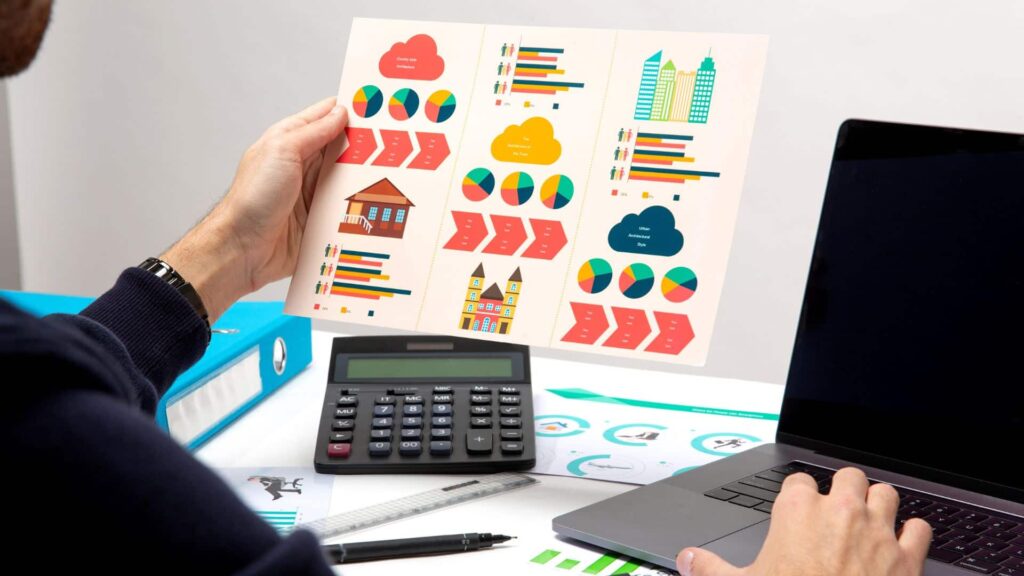What is Data Visualization?
Data visualization is an artful representation of data through visuals like charts, graphs, and maps. It’s a powerful way to make complex information more accessible and understandable. By transforming raw numbers into graphical elements, data visualization acts as a bridge between intricate data analysis and practical decision-making. This visual approach allows for quicker insights and more effective communication of complex ideas.
Exploring Types of Data Visualization
Data visualization comes in various forms, each tailored to convey specific types of information effectively. From the familiar bar charts and pie graphs that provide a quick overview, to more sophisticated visuals like heatmaps and scatter plots, this wide array of techniques ensures that there’s an appropriate tool for every type of dataset and purpose.
Data Visualization and Storytelling: A Dynamic Duo
When data visualization joins forces with storytelling, it forms a potent combination. This entails more than just presenting visuals; it involves contextualizing the data, crafting a narrative around it, and creating a compelling experience for the audience. This fusion doesn’t just reveal ‘what’ the data shows, but also delves into the ‘why’ and ‘how,’ offering a deeper understanding of the insights being presented.
The Significance of Storytelling in Data Visualization

Storytelling breathes life into data visualization. It provides the necessary context that guides the audience through the narrative arc of the data. This contextualization enables stakeholders to relate to the information on a personal level, fostering better comprehension and retention. Moreover, storytelling imbues data with relevance, illustrating its real-world impact and implications.
Also Read: AI vs. Software Engineering: The Future Landscape
The Four Features of Great Data Visualization and Storytelling
- Clarity: The visuals should be clear and easy to understand, ensuring that the message is conveyed without ambiguity.
- Relevance: The story should directly address the audience’s interests and concerns, making the information pertinent to their needs.
- Engagement: Effective data visualization and storytelling captivate the audience’s attention, keeping them invested in the narrative.
- Memorability: A well-crafted narrative combined with impactful visuals leaves a lasting impression, making the information more likely to be retained.
Decoding Data Storytelling
Data storytelling involves crafting a narrative that guides the audience through the insights derived from the data. It connects the dots between data points, revealing the underlying patterns and implications. A compelling data story not only informs but also inspires action, driving informed decision-making.
Benefits of Data Storytelling
- Enhanced Comprehension: Complex data becomes digestible and understandable through storytelling, ensuring that the audience grasps the key takeaways.
- Increased Engagement: Stories captivate the audience, making them more receptive to the information being presented.
- Improved Retention: People are more likely to remember information presented in a narrative format compared to raw data.
The 5 C’s of Data Visualization

- Clarity: The visuals should convey the intended message clearly and unambiguously. Avoid clutter and ensure that the information is presented in a straightforward manner.
- Conciseness: Eliminate unnecessary elements that do not contribute to the message. Keep the visualization clean and focused on conveying the key insights.
- Consistency: Maintain a cohesive visual style to avoid confusion. Use consistent color schemes, fonts, and labeling conventions throughout the visualizations.
- Correctness: Ensure that the data is accurate and represented truthfully. Any inaccuracies or misrepresentations can lead to incorrect interpretations.
- Customization: Tailor the visualization to suit the specific audience and purpose. Consider the preferences and knowledge level of the audience when designing the visuals.

Tools for Data Visualization
Several powerful tools exist to facilitate data visualization, catering to a wide range of user needs and preferences. User-friendly options like Tableau and Google Data Studio provide intuitive interfaces for creating visualizations. For those seeking more customization and flexibility, Python-based libraries like Matplotlib and Seaborn offer robust options.
The Six Key Elements of Data Storytelling
- Characters: Identify the key players in the data story, whether they are individuals, groups, or entities. This adds a human element to the narrative, making it more relatable.
- Setting: Establish the context in which the data is situated, providing the backdrop for the narrative. This helps frame the story and gives it a specific context.
- Conflict: Highlight the challenges or discrepancies in the data that drive the narrative forward. This provides a sense of tension and resolution in the story.
- Resolution: Offer solutions, insights, or recommendations based on the data analysis. This gives the audience a clear takeaway and actionable insights.
- Plot: Structure the story in a way that engages the audience and leads them through the data. A well-structured narrative keeps the audience interested and invested in the information being presented.
- Message: Clearly articulate the main takeaway or call to action that the data story conveys. This ensures that the audience understands the significance of the information presented.ing
